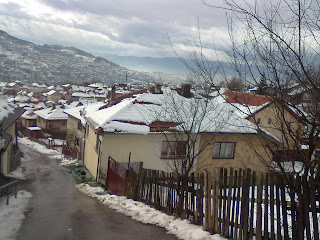Each of the five ambulances that responded to 600k Sarajevo residents has a doctor and two EMTs. The EMTs have the skills of cannulation and drug administration. The doctor can intubate and more importantly, treat and release the majority of the emergency calls.
The Hitna Pomoc ambulance service is based in downtown Sarajevo and has an extensive clinic with the ambulance bay. There are two doctors on duty for the walk in clinic and a surgeon on standby for major cases. The three doctors handle the majority of the casualties coming from the walk in clinic and the ambulances.
For the Remote Medic wishing to get an extensive experience of patient contact would benefit greatly from this programme. There are options to work in the walk in clinic as well as riding the ambulances for 999 calls.
Language is a barrier. Most of the ambulance teams have someone who can speak at least a few words of english. Half of the doctors are fluent in english and riding with them is the best option.
The first shift can be slow as the crews get to know you. Once you have been there a couple of days the staff relaxes and will let you do most medical procedures.
Most of the calls are minor ailments that only require stay at home treatment. For the majority of medical calls the doctor will prescribe what the RMI instructor named (the "Double D's.) At least 50% of all calls end with Diclofenac & Diazepam IM injection in the bum. In fact, many patients will not be happy unless they get their shot in the bum. The patient is then left at home happy, pain free and a bit more mellow.
In fact, on several occasions, it was witnessed that one of the family members was so distraught with emotion about their loved one being ill that the doctor would give the family member the Double D's as well. Everyone was left happy, pain free and a bit mellow.
Most of the medicines where given IM including Furosemide for Congestive Heart Failure.
Trauma was not seen very much. The worst traumatic injury that was witnessed was a multiple casualty road traffic accident. One of the casualties had an obvious mid brain injury as he was decerebrate posturing. No assessment was done. A poorly fit cervical collar was put on and the casualty was placed on a clamshell scoop stretcher and loaded into the ambulance. Once the casualty got into the A&E we took him off the scoop stretcher and left him there. He was trying to sit up.
The other casualties were not assessed but herded into a second ambulance and taken to the A&E. The newspaper stated that three of them were still in the ICU twenty four hours after the event.
Most of the calls the RMI instructor was not allowed to touch the casualty. During the week on the ambulance there were half a dozen needle sticks and cannulation. There were ten or so EKG readings. That was it.
The time spent in the A&E was the shining light on this experience. One of the doctors was quite happy to have someone in the clinic treating casualties. There were loads of cannulations, drug administrations, EKG, and a high patient rotation.
Again, there was little option to touch a casualty. Vital signs were seldom if ever taken. The stethoscope wasn't used by the RMI medic at all.
There is another AREMT clinical site in Croatia that is only a hospital. In that rotation there is time spent in A&E as well as surgery. Hopefully that will provide more hands on experience.
Main entrance to Hitna Pomoc Ambulance Clinic
This is the call centre for the entire Sarajevo ambulance service
This is one of the four resus rooms in the walk in clinic
This is one of the nurses taking an EKG reading
One of the ambulance doctors treating a casualty
View of Sarajevo
Hitna Doctor with Cardiac Patient
Ambulance on House Call
Ambulance crew in A&E
A&E doctor trying to keep up with the casualties
This elderly woman had an untreated elbow fracture. She still had use of her arm.
Yugoslavian Army Hospital now used as secondary clinic
View from the mountains surrounding Sarajevo
The A&E staff were always swamped
Mini Ambulance
Drug Cabinet
There were a few of us on clinical rotation
Additional information can be found at RemoteMedicine.ie


















No comments:
Post a Comment
Note: Only a member of this blog may post a comment.